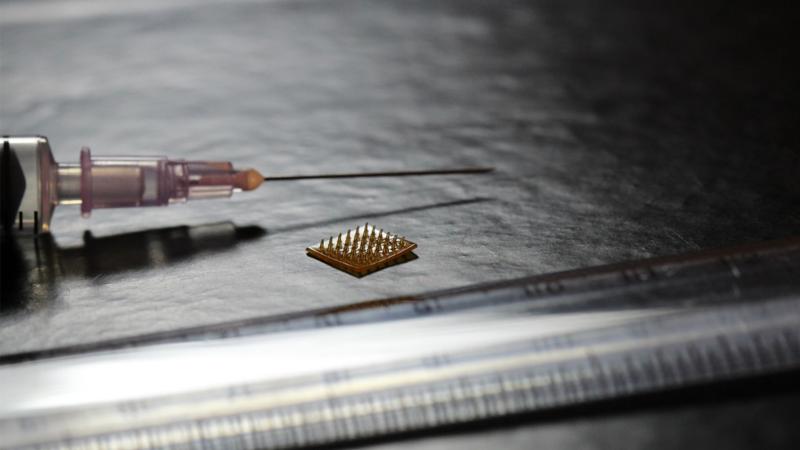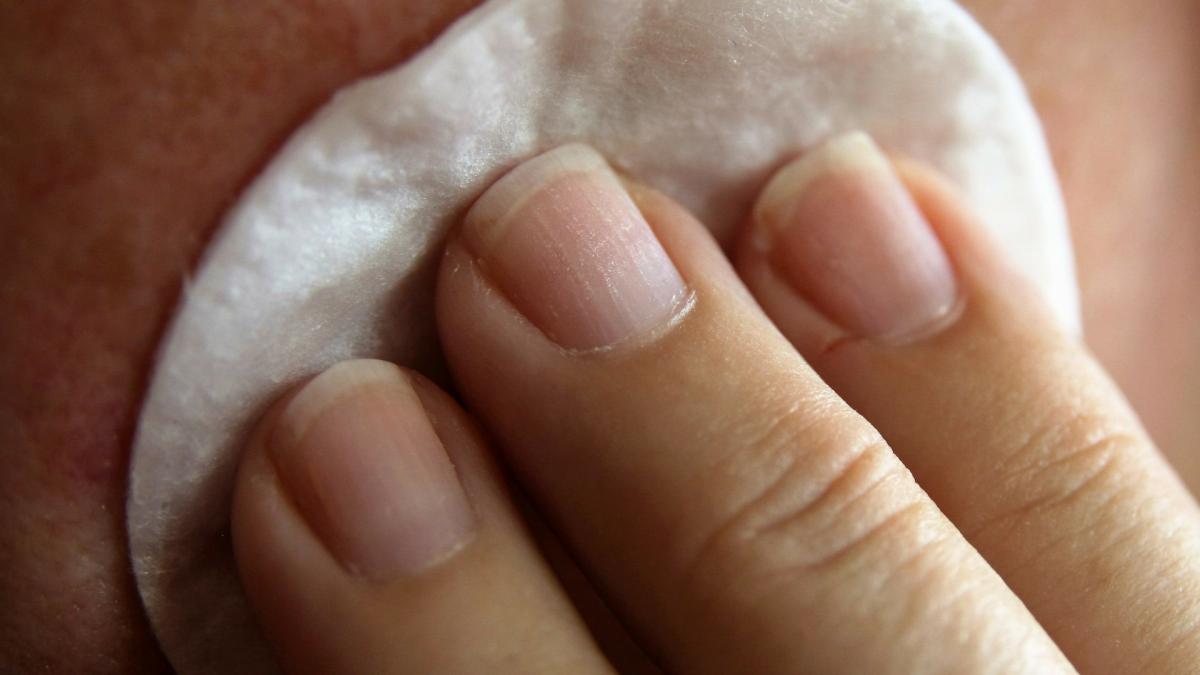
In a recent study published in the Journal of Controlled Release, Dr.Venuganti and researchers from the Birla Institute of Technology and Science, Hyderabad and the US Food and Drug Administration have reviewed the growing list of possible applications of microneedles- MN- that could change our lives in a myriad of ways.
With applications ranging from cosmetic healing of scars to detecting tuberculosis, these tiny needles could be our ticket to a healthier and happier future.
"On the global scale, there could be exponential growth in the approved products. In India, there are few companies working on the development of MN-based products. But we could see 3-5 MN products in India within next 5 years. Especially for vaccines delivery, cancer and diabetes management", says Dr. Venuganti.
Microneedles, as the name suggests, typically have a diameter of a few hundred microns, have very sharp tips and a length of up to 1000 microns. A micron is a very small unit of measuring length. For instance, the approximate width of an average human hair is 99 microns. Microneedles first used in 1921 for the dissection of a echinoderm egg. The first patented use of microneedles for delivering medicines was by Martin S. Gerstel and Virgil A. Place of the USA in 1971. Over the years, there have been several inventions and applications for MNs.
"MNs are seen as disruptive drug delivery devices mainly to replace some of the syringe-based injections. Their advantages include avoiding healthcare professionals to administer medicines, reduction in price of devices compared to syringes, ease of application, easy packaging and storage conditions, reduced contaminations and reduced injuries associated with reuse", explains Dr. Venuganti.
"The cosmetic applications of microneedles is based on the biological repair mechanisms of the skin. These tiny needles create small holes and causes minimal bleeding on the skin. This triggers the wound repair mechanism - inflammation, proliferation and remodeling," explain the authors in their paper. "However, the only issue with microneedles being used in cosmetic applications is that it exposes the skin to external microorganism. Here, the sterility of the device becomes important", he points out.
And many cosmetic companies have already embraced microneedles - Beauty Mouse, Revive-MN and Dermafrac being a few. Beauty Mouse’s Derma-roller, a popular device invented in Germany, has a cylinder mounted with microneedles, which on rolling along the skin has been shown to reduce blemishes, fine wrinkles, lines and small stretch marks. The Dermapen and Dermastamp are similar devices that use pulsating motion to stamp the microneedles onto the skin for a controlled effect. Beauty Mouse, 'Revive-MN Procedure kit’ and Dermafrac use such technologies.
Microneedles to give a touch of glow
On your next visit to your dermatologist, you might as well experience microneedles yourself. Today, they have been experimented with for a range of applications including treating acne vulgaris or pimples, acne scars, vitiligo or patchy loss of skin colour, cellulite or dimpling of the skin, aid skin rejuvenation and reduce hair growth. In fact, studies say microneedles are better when compared with other popular cosmetic approaches such as microdermabrasion, laser treatment, chemical treatment, botox injection and others.

Microneedles for the touch of healing
Currently, several microneedles-based medicine delivery devices are in the clinical trial phase. Devices for flu vaccinations, insulin injections, polio vaccinations, and hormone delivery for osteoporosis treatment are being tested for their feasibility. Very soon, they are expected to be available at your next-door pharmacy with a prescription.
Different types of microneedles can be used for different therapeutic applications. Based on the design, they come in two types -- Hollow and Solid microneedles. "Hollow microneedles MNs deliver medicines through a channel in the needle, whereas solid microneedles can create pores in the skin as a pretreatment, or can deliver the medicine from the surface or the inside of microneedles," explain the authors in their paper.
Since hollow microneedles act as a channel, the design of the needle tip becomes critical as it . affects the mechanical strength of the needle and the way the needle has to be inserted into the skin. The design has to ensure that the flow is continuous and the tip is not blocked.
Solid MNs deliver medicine following the “poke and patch”, the “poke and release”, or the “coat and poke” approaches. In the “poke and patch” approach, solid MNs are to pre-treat the skin before application of topical/transdermal drug formulation that can diffuse through the micro-channels created in the skin. In “coat and poke” approach, MNs coated with the drug help to release and diffuse the drug into the skin after inserting the MNs into the skin. In the “poke and release” approach, the drug is encapsulated inside the MNs which dissolve and release the drug after inserting into the skin.
Microneedles for diagnosis
How about poking your skin to know if you have cancer or tuberculosis? That’s where advancements in microneedles could be taking us! Currently being tested in-vitro and on animal models, microneedle-based diagnostic devices are expected to foray into the market quite soon.
A tuberculin skin test is a diagnostic test used for detecting a tuberculosis infection. In a conventional test, called the Mantoux technique, the tuberculosis antigen, in the form of a purified protein derivative is injected into the skin. The development of a red bump within a day or two at the site of injection confirms a previous exposure to Mycobacterium tuberculosis, the bacterial pathogen causing tuberculosis. 2 devices were recently tested as alternatives to the traditional tuberculin skin test that tests for previous exposure to tuberculosis. The results of the clinical trials on humans of the first device (NCT01611844) are not available as of now. But a similar study performed with the MicronJet 600TM showed to be as effective and safe as a conventional needle test while being lesser painful as well. This shows the hopes we may pin on MNs.
A close look at your General Practitioner's table is a baffling sight. Apart from the stethoscope, the blood pressure monitor, fancy computer screens, the loads of medical files and medicines, there are unusual things like chocolates, soft toys, colouring books, lego sets and dolls! But why? It’s because they also have syringes and needles! Infants and young children need them to cope with the stress they undergo during their routine vaccination shots. But how about adults? If you suffer from trypanophobia -- the fear of needles -- you may need those toys too!
One of the earliest recorded evidence for the use of needles can be found in China. Shiji, the historical records from the Han dynasty of ancient China, contains details on the use of needles. It is around two thousand years old. Fast forwarding to the modern times, acupuncture exists now as a part of the traditional Chinese medicine (TCM) system. But the use of needles has moved beyond TCM clinics to every other clinic around the world.
And why? It is because a large part of medicines consumed orally in the form of tablets or syrups, are lost due to the body's metabolic processes -- only a small part is actually absorbed in the blood. This is why doctors thought of the skin as a good means for introducing medicines into the body. But that is not too easy! The skin is a formidable barrier to germs and foreign objects. "Only molecules with optimal properties can diffuse through the skin membrane. Over the years, many different techniques have been developed to achieve this”, says Dr. Vamsi Krishna Venuganti, an Assistant Professor at the Department of Pharmacy, BITS Pilani, Hyderabad Campus.
The macro future of microneedles
Whatever the case, these microneedles are revolutionising our health and cosmetics industry and are definitely here to stay.






